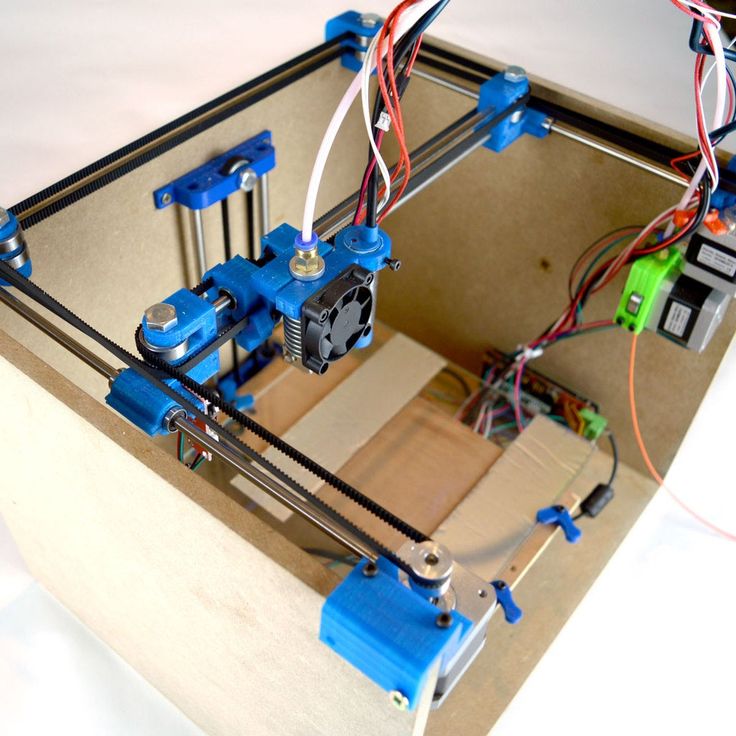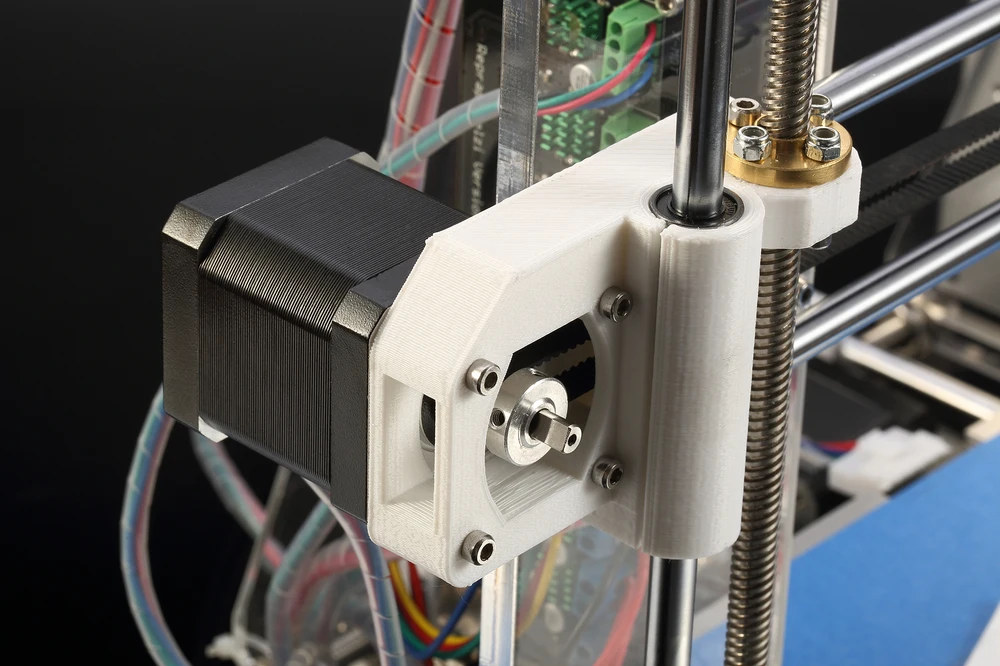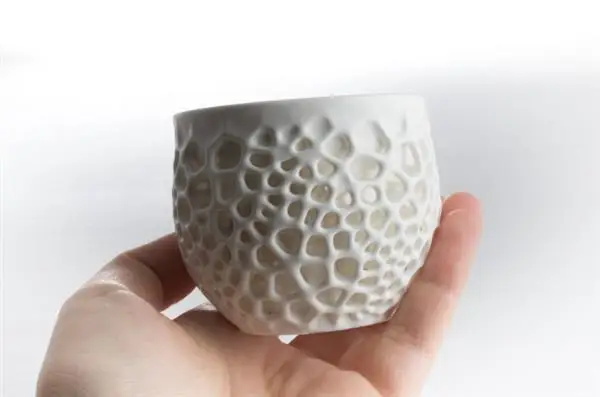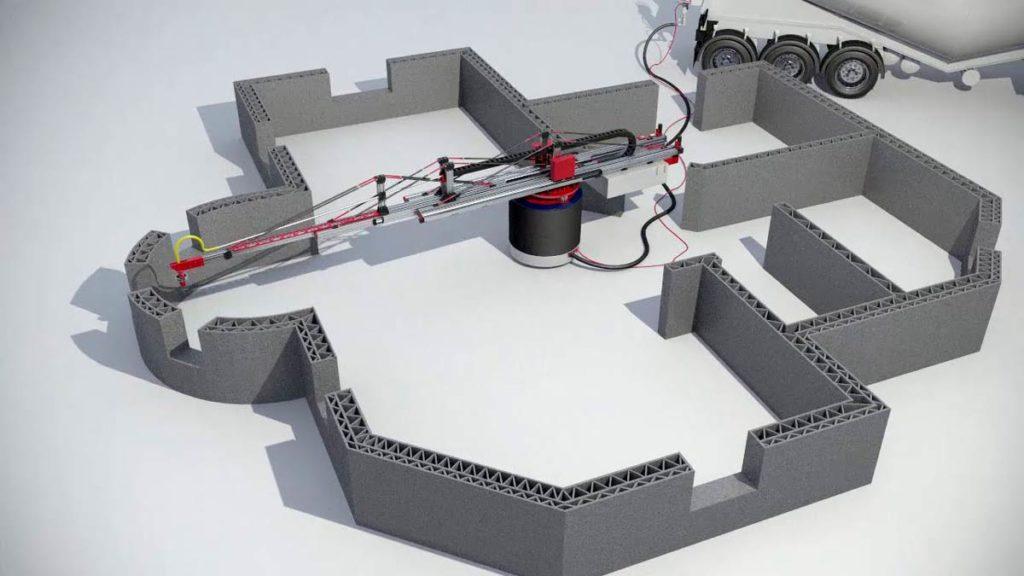Lignin 3d printing
Researchers upcycle lignin for sustainable 3D printing with economics in mind
0Shares
Researchers from the University of Delaware (UD) have released a new research paper exploring ways of economically upcycling biomass into new 3D printing materials.
Funded by the National Science Foundation Growing Convergence Research (NSF GCR) program, the paper focuses on lignin, a waste product left over from making paper products, and demonstrates that it is possible to efficiently turn it into bio-based 3D printing resins in an approach they claim is competitive with similar petroleum-based products.
“The ability to take something like technical lignin and not only break it down and turn it into a useful product, but to do it at a cost and an environmental impact that is lower than petroleum materials is something that no one has really been able to show before,” said Thomas Epps, NSF GCR lead at UD.
One of the end-products the UD researchers and colleagues are investigating is the creation of bio-resins for 3D printing.Repurposing lignin for 3D printing
Lignin is a chemical that provides strength and stiffness to plant cells walls, and is produced endlessly by plants to protect themselves from predators. As such, lignin is a widely available resource, with about 100 million tons of technical lignin waste generated annually in pulp and part mills around the world, UD says. While the researchers claim their research to be unique, there has been progress in this area by several other universities and 3D printing firms, too.
In 2020, Researchers from the University of Freiburg combined lignin with cellulose calls to develop their own environmentally-friendly wood-based 3D printing material. The biosynthetic polymer has potential uses within light construction or industrial applications.
Elsewhere, MIT scientists developed their own lab-grown wood cells containing lignin-reinforced walls that could form the basis of a new, more sustainable 3D printable biomaterial. Although still in its early stages, in future the research could lend itself as a means of 3D printing eco-friendly furniture or producing synthetic woods to address the growing global deforestation crisis.
Although still in its early stages, in future the research could lend itself as a means of 3D printing eco-friendly furniture or producing synthetic woods to address the growing global deforestation crisis.
Perhaps the most notable development in this area so far is Desktop Metal’s new Forust wood 3D printing technology launched midway through last year. The process upscales waste byproducts from wood, such as lignin and sawdust, to create sustainable 3D printing materials compatible with its binder jet technology.
Researchers from Freiburg University used a DIW 3D printing technique (pictured) to test their novel environmentally-friendly wood-based 3D printing material. Image via Lisa Ebers, Freiburg University.Economically upgrading lignin
What sets the UD research apart from others in the area is its focus on the economics of the upscaling process. One of the main drawbacks of upgrading lignin is that many existing processes operate at very high temperatures, and are therefore expensive and difficult to scale. Current industrial techniques also still come with the safety concerns, capital costs, and energy consumption associated with traditional solvents, temperatures, or pressures.
Current industrial techniques also still come with the safety concerns, capital costs, and energy consumption associated with traditional solvents, temperatures, or pressures.
To address these challenges, the UD research team replaced methanol, a traditional solvent used in lignin deconstruction, with glycerin to enable the process to take place at a normal atmospheric pressure. Glycerin is an inexpensive ingredient typically used in liquid cosmetics, soaps and shampoos for its moisturizing benefits, but can also be used to break down lignin into its chemical building blocks, from which a broad range of bio-based products like 3D printing resins can be made.
Replacing methanol with glycerin provided the same chemical functionality but at a much lower vapor pressure, eliminating the need for a closed system. This enabled the researchers to complete the process’ reaction and separation steps simultaneously, leading to a more cost-effective system.
According to the researchers, operating at atmospheric pressure is not only safer, but also provides a straightforward route to scale the method up from small batches to run continuously, which they say will create more material cheaper, faster, and with less manual labor.
Assessing economic viability
The method was developed over the course of a year to ensure its repeatability and consistency, and during this time the economic feasibility of the process was also assessed.
The team researched data sets on which types of products the team could create with their newly-created SLS 3D printing materials and estimate their physical properties. This allowed the team to model the system to see if the materials created would be economically viable.
The models assessed technical lignin waste from various pulping processes obtained from project partner CanmetENERGY in Canada. This enabled them to consider how upstream costs like the feedstock price or yield would impact the economics of the method further along the process.
According to the models, the UD’s low-pressure method could reduce the cost of producing a bio-based pressure-sensitive adhesive from softwood Kraft lignin by up to 60 percent compared to a conventional higher-pressure process. While the scientists acknowledge the cost advantage was less pronounced for other types of technical lignins used in the study, softwood Kraft lignin is one of the most commonly generated types of technical lignin by the pulp and paper industry.
While the scientists acknowledge the cost advantage was less pronounced for other types of technical lignins used in the study, softwood Kraft lignin is one of the most commonly generated types of technical lignin by the pulp and paper industry.
The researchers’ analysis demonstrated that while yield plays a major role in plant economics, the cost to operate the new, low-pressure process was significantly lower than that of the conventional process “in all cases”, offering reduced capital costs and the generation of valuable co-products. The team also carried out a life-cycle assessment (LCA) to find out how much greenhouse gas emissions are generated by the process, the data of which can be used in the future to explore further ways to optimize the process.
With a patent currently pending for their ambient pressure process, the researchers believe the method offers “a lot of potential” for using renewable resources to make various types of plastics in favor of fossil fuels.
Further information on the study can be found in the paper titled: “Ambient-pressure lignin valorization to high-performance polymers by intensified reductive catalytic deconstruction,” published in the Sciences Advances journal. The paper was co-authored by R. O’Dea, P. Pranda, Y. Luo, A. Amitrano, E. Ebikade, E. Gottlieb, O. Ajao, M. Benali, D. Vlachos, M. Ierapetritou, T. Epps.
Subscribe to the 3D Printing Industry newsletter for the latest news in additive manufacturing. You can also stay connected by following us on Twitter and liking us on Facebook.
Looking for a career in additive manufacturing? Visit 3D Printing Jobs for a selection of roles in the industry.
Subscribe to our YouTube channel for the latest 3D printing video shorts, reviews and webinar replays.
Featured image shows one of the end-products the UD researchers and colleagues are investigating is the creation of bio-resins for 3D printing. Photo via Paula Pranda.
Photo via Paula Pranda.
Tags A. Amitrano CanmetENERGY D. Vlachos Desktop Metal E. Ebikade E. Gottlieb M. Benali M. Ierapetritou MIT National Science Foundation NSF GCR O. Ajao P. Pranda R. O’Dea Thomas Epps University of Delaware University of Freiburg Y. Luo
Hayley Everett
Hayley is a Technology Journalist for 3DPI and has a background in B2B publications spanning manufacturing, tools and cycling. Writing news and features, she holds a keen interest in emerging technologies which are impacting the world we live in.
Bio-Based 3D Printing Resin Developed from Upcycled Lignin - 3DPrint.com
One way to help our planet is by using more sustainable materials, such as those made from bio-based materials, but the problem is that these are not yet common enough to be economically sound. Researchers from the University of Delaware and CanmetENERGY in Canada put it best by explaining that if the cost of milk goes up to $20 a gallon because the bio-based jug was so expensive to make, no one’s going to buy that milk.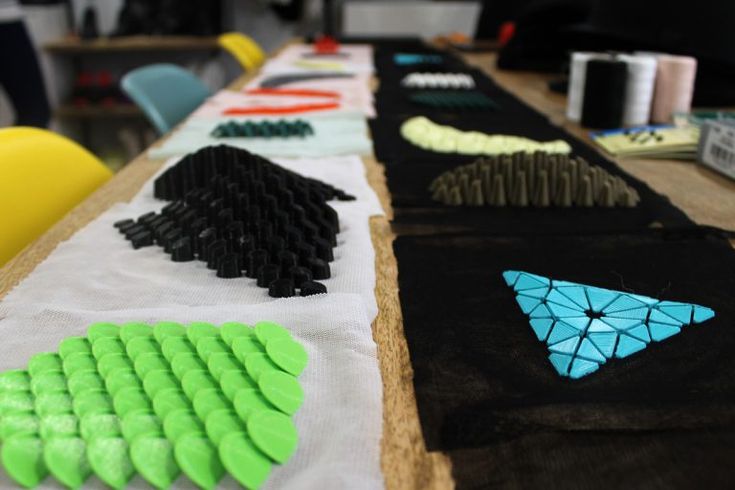 The collaborators recently published a paper about their method of turning industrially processed lignin—waste from making paper products—into sustainable high-performance plastics, like bio-based 3D printing resins, more efficiently.
The collaborators recently published a paper about their method of turning industrially processed lignin—waste from making paper products—into sustainable high-performance plastics, like bio-based 3D printing resins, more efficiently.
The abstract states, “Here, we provide the first report of an intensified reactive distillation–reductive catalytic deconstruction (RD-RCD) process to concurrently deconstruct technical lignins from diverse sources and purify the aromatic products at ambient pressure. We demonstrate the utility of RD-RCD bio-oils in high-performance additive manufacturing via stereolithography 3D printing and highlight its economic advantages over a conventional reductive catalytic fractionation/RCD process.”
In the natural world, lignin is a part of trees and plants that offers stiffness and strength to help them stand up, but in the paper and pulp industry, it’s considered unusable, except for adding to tires as filler or burning it for heat; not very sustainable options. About 100 million tons of technical lignin waste a year is generated from paper and pulp mills, and the researchers believe that the material could be put to much more use. With funding from the National Science Foundation Growing Convergence Research (NSF GCR) program, they set out to economically upcycle biomass into new products.
About 100 million tons of technical lignin waste a year is generated from paper and pulp mills, and the researchers believe that the material could be put to much more use. With funding from the National Science Foundation Growing Convergence Research (NSF GCR) program, they set out to economically upcycle biomass into new products.
Overview of RCD processes. (A) Conventional RCD using methanol as a solvent, 40-bar external h3, and 5 weight % (wt%) Ru/C as a catalyst and (B) RD-RCD developed in this work using glycerin as a solvent and no external h3. At an operating temperature of 250°C, conventional RCD is pressurized to between 80 and 120 bar, whereas RD-RCD operates at ambient pressure.
Professor Thomas H. Epps, III, the Allan and Myra Ferguson Distinguished Professor of Chemical and Biomolecular Engineering, leader of UD’s NSF GCR efforts, and also a professor in the Department of Materials Science and Engineering, said, “The ability to take something like technical lignin and not only break it down and turn it into a useful product, but to do it at a cost and an environmental impact that is lower than petroleum materials is something that no one has really been able to show before.
”
It’s costly and tough to scale when upgrading lignin, plus most of the necessary processes involve high pressures. So instead of using methanol as a solvent to deconstruct the lignin, this team went with glycerin, an everyday, inexpensive ingredient often used in lotions, soaps, liquid cosmetics, and shampoos. Not only did this choice keep costs down, but due to its high boiling point, glycerin also allowed the process to happen at ambient atmospheric pressure, which is much safer, faster, and easier to scale.
Glycerin breaks down lignin into chemical building blocks that can help make bio-based products, such as antioxidants, various plastics, and 3D printing resins. The material offered the same chemical functionality as methanol would, but a closed system wasn’t needed because glycerin requires much lower vapor pressure, allowing the team to perform the reaction and separation steps at the same time.
This interlocking UD was created from 3D printing resin made with technical lignin biomass.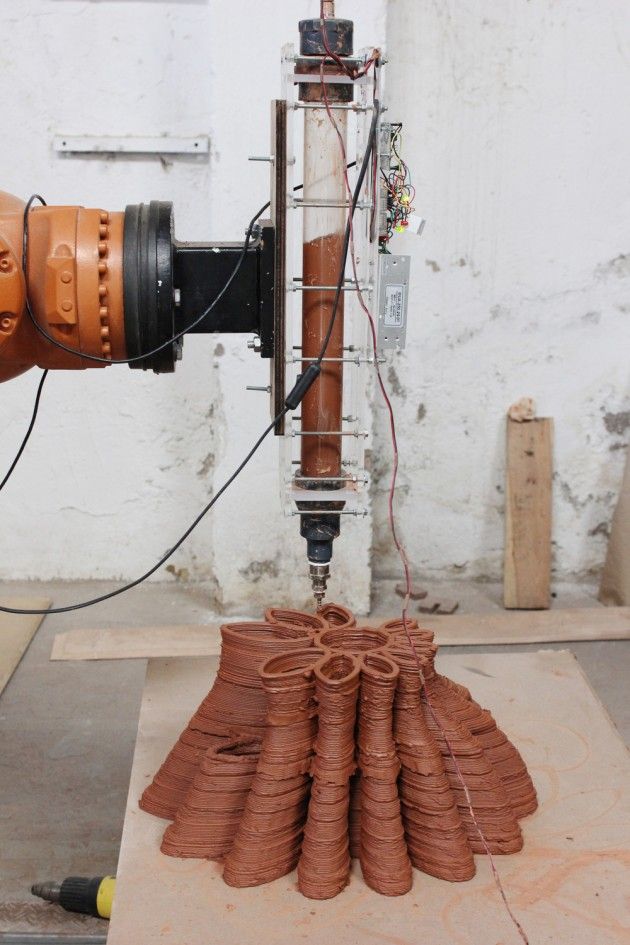 This is not a scratch-and-sniff photo, but, if it were, you might detect the slight smell of barbecue. The reason? The aromatic chemical compounds from the UD-developed process are akin to those found in liquid smoke.
This is not a scratch-and-sniff photo, but, if it were, you might detect the slight smell of barbecue. The reason? The aromatic chemical compounds from the UD-developed process are akin to those found in liquid smoke.
The team spent about a year developing the process and ensuring that it was consistent and repeatable; CanmetENERGY gave them technical lignin waste from different pulping processes to use. One of the co-lead authors and a 2021 UD Honors graduate student, Paula Pranda, looked at available data sets to see what products they could create, and estimated the physical properties of the materials they’d need. This made it possible for chemical engineering doctoral student Yuqing Luo, from Professor Marianthi Ierapetritou’s group, to analyze if the system was practical from an economic point of view. Through economical modeling, Luo determined that the cost of producing a pressure-sensitive, bio-based adhesive from softwood Kraft lignin decreased by 60% when comparing the team’s low-pressure method to a typical high-pressure one.
“We knew we could physically do it, but we needed to know whether it actually made any financial sense to do it at the scale of the chemical plant,” said lead author Robert O’Dea, a doctoral student in the Epps lab. “Yuqing’s analysis showed it does.”
Robert O’Dea is a chemical engineering doctoral student working in the lab of Professor Thomas Epps and co-author on a new paper which looks at methods of repurposing lignin, the hardest-to-recycle part of trees, grasses and other biomass.
In the analysis, Luo looked at upstream costs such as feedstock price or yield to see how they might impact the economics of the process later on, and found that because of reduced capital costs and the ultimate creation of valuable co-products, the cost of operating the team’s low-pressure process was much less than conventional methods. Luo also performed a life-cycle assessment to see how much greenhouse gas emissions the materials production would create, and found that the team’s approach was still competitive with other similar petroleum-based products.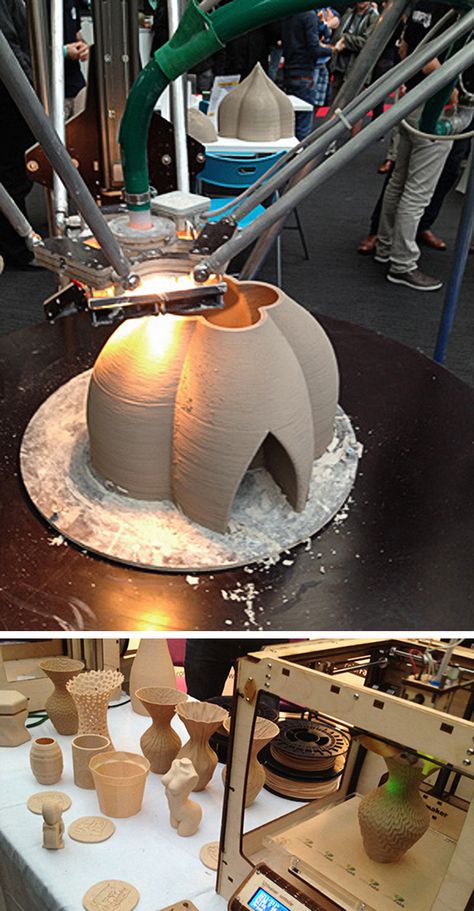
Luo explained, “We were trying to capture the bigger picture, not just the costs of the process, but also the environmental impacts across the entire operation.”
To demonstrate their new RD-RCD lignin oils, the team added acrylated nonwood, acid-precipitated soda lignin (SNWA) bio-oil—because of its high syringol content—into a Peopoly SLA resin. After designing a printable version of the university’s logo in Fusion 360 software, they 3D printed the material on a commercially available Peopoly Moai 200 SLA printer.
SLA 3D printing. (Top) Functionalization reactions for RD-RCD bio-oil and vanillyl alcohol. (Bottom) 3D printed UD using the SLA resin in a commercially available SLA printer. The photo was taken after rinsing with isopropanol and post-curing under an ultraviolet lamp for 10 min. R.T., room temperature.
“The complete 3D printing formulation contained 40 wt% acrylated bio-oil obtained directly from the RD-RCD products generated in this work, 40 wt% lignin-derivable vanillyl alcohol diacrylate, 15 wt% Peopoly resin, and 5 wt% photoinitiator.
The diacrylate and Peopoly resin were added to improve overall print quality,” the researchers wrote. “A second resin was prepared from the acrylated bio-oil and vanillyl alcohol diacrylate without Peopoly resin, and the material was cured following the same procedure. However, the print without Peopoly exhibited breaking/flaking after several minutes.”
The researchers have a patent pending on their ambient pressure process.
“It shows there is a lot of potential for using renewable resources to make different types of plastics,” Pranda said about the low-pressure method. “You don’t have to use fossil fuels, plastics from renewable resources can be economically feasible, too.”
Stay up-to-date on all the latest news from the 3D printing industry and receive information and offers from third party vendors.
Tagged with: 3D printing plastics • analysis • biobased • biomass • bioresin • CanmetENERGY • collaboration • Economics • Fusion 360 • glycerin • lignin • Moai SLA 3D printer • patent-pending • Peopoly • research paper • sla 3d printing • SLA resin • stereolithography • sustainable materials • University of Delaware • upcycling
Please enable JavaScript to view the comments powered by Disqus.
Cellulose and lignin turned into a material for 3D printing
German and Swiss scientists have developed a material for 3D printing and molding based on a mixture of wood components - cellulose and lignin. Such a composition makes it possible to achieve the desired anisotropic properties of printed objects, as well as potentially using paper production waste or recycled waste paper to create the material, the authors of the article say in ACS Applied Bio Materials .
Cellulose and lignin are the two most common biopolymers on Earth. In addition to their prevalence and, therefore, low cost, they are attractive to scientists for their properties and the way these properties manifest themselves in wood: they give it high strength at low density and thermal conductivity. Many materials scientists are developing methods for "reassembling" cellulose or its mixture with lignin into new composites, but usually these methods are not suitable for the additive production of objects of arbitrary shape.
Marie-Pierre G. Laborie and colleagues at the University of Freiburg and the Swiss Federal Research Institute for Materials Science and Technology have developed a new biocompound based on cellulose and lignin that can be used to create anisotropic materials and 3D printing.
The two main components of the blend are cellulose-derived hydroxypropyl cellulose and beech lignin, obtained from organic solvent pulping when making paper. The researchers dissolved them in a mixture of acetic acid and deionized water in a four-to-one ratio of cellulose to lignin. The mixture itself is not enough to get a single material out of it, so the scientists also added an agent to it, which, using esterification, links the molecules of two biopolymers through their hydroxyl groups. They created several different formulations with different binders: citric acid, glycerin, or a dimeric fatty acid known as Pripol 1017.
Scientists have created flat samples with an anisotropic structure from different mixtures. They obtained it with the help of the flow of the solution, due to which the particles remain oriented along the direction of flow during solidification. They also showed that the material can be used for 3D printing. To do this, they created a separate version of the composition with a mass ratio of cellulose and lignin three to one, as well as citric acid and Pripol 1017 as binding agents. With it, they printed several gratings and cylinders.
They obtained it with the help of the flow of the solution, due to which the particles remain oriented along the direction of flow during solidification. They also showed that the material can be used for 3D printing. To do this, they created a separate version of the composition with a mass ratio of cellulose and lignin three to one, as well as citric acid and Pripol 1017 as binding agents. With it, they printed several gratings and cylinders.
In one of the experiments, the authors showed that due to the anisotropic internal structure, when wet and dry, the plates fold and unfold in a known direction. They also managed to recreate a similar effect in 3D printed objects.
Cellulose is also used to create other objects or materials with high performance. For example, last year Finnish scientists made an optical fiber out of it, and Swedish scientists mixed it with spider protein and learned how to create an artificial web from this mixture.
Grigory Kopiev
Found a typo? Select the fragment and press Ctrl+Enter.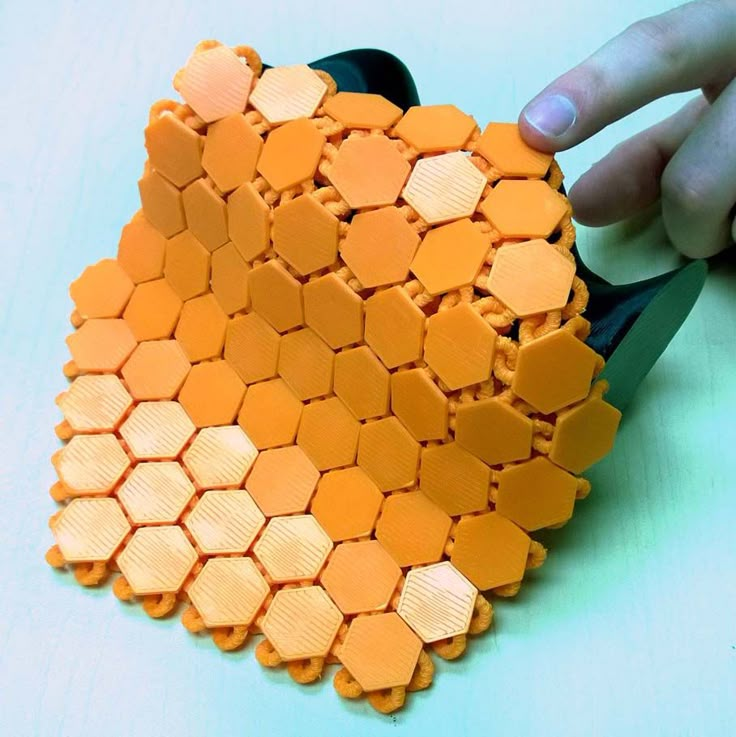
New plant based material / 3d printing / 3Dmag.org
In Tennessee, Oak Ridge National Laboratory has developed a new material based on lignin, the second most common natural polymer after cellulose. Lignin is also an important component in the formation of cell walls, especially in tree bark, so it has sufficient rigidity and does not rot.
In addition, lignin is a by-product of the biofuel process, and therefore, in the future, it is easily reproducible. The material based on it is distinguished by good "printability" and performance. In addition to lignin, the new thread includes rubber, carbon fiber and ABS. Parts and components printed from the novelty are distinguished by a more rigid "coupling" between layers - 100% higher than traditional ABS plastic.
Curiously, ORNL took five years to develop the material! “To achieve this result, we have collected all our experience with lignin over the past five years. We will continue to fine-tune the material to make it even stronger,” comments lab spokesman Amit Naskar.
We will continue to fine-tune the material to make it even stronger,” comments lab spokesman Amit Naskar.
Unfortunately, at the moment it is not known whether the biofilament will go on sale and at what price it will be sold. A more detailed description of the process and all the technical details can be found in the article "General Method for Improving 3D Printing and Interlayer Adhesion in Lignin-Based Components".
Related entries:
-
just4fun
3d printing → Thread with "shape memory" 0 - Learn more


